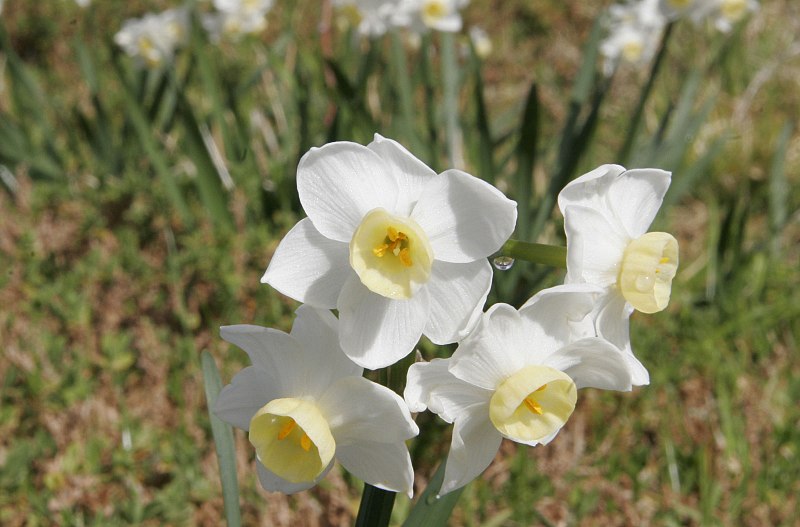I bought a Sony a65 DSLR camera with 4 lenses for about £550. However, I'm wondering whether to sell a couple of the lenses, and hoped you could give me some advice on the subject. Originally I bought the equipment as I thought it was a good deal, however now I'm not so sure.
The four lenses include:
A Sony SAL1855 18-55mm AF lens, a Sony SAL75300 75-300mm lens, a Minolta 28-105 AF lens, and a Minolta Sigma 35-70mm lens. I have done a little bit of research, however I have noticed the Sony lenses seem to be more expensive than the Minolta ones, however I'm not sure that makes much of a difference.
I was tempted to sell the Minolta lenses and keep the Sony ones, let me know what you guys think.
Camera Advice
-
Dr Lobster*
- Posts: 2132
- Joined: Sat 30 Aug, 2003 20.14
I don't have any specific knowledge of those lenses or really the Sony DSLR system (I have always had Canon), but here are a few thoughts:
In my experience, newer versions of lenses tend to be better - sharper, faster AF, better coatings on the lens elements to better resist flare and chromic aberration and better contrast/colour.
That said, in reality the differences are pretty marginal and I don't think most people would ever be able to tell the difference between a new and old lens in a normal sized print or image or in a normal correctly exposed photograph.
The big question really is what do you take photographs of? - what focal lengths do you use the most?
I used to have a 24-70 and 70-200 2.8 zooms, they covered me for everything I need, but the 24-70 lens as great as it was i just didnt feel any magic from it and sold and got a 35 1.4 prime instead, which I love and has got as special something about it. Its a great all purpose snappy lens that's pretty light as well.
In the end I sold the 70-200 and I ended up with an 85 1.4 and a 135 2. I miss the flexibility of the zoom and one day I will probably get it again but I love wide aperture prime lenses, and I love the look they give when used wide open or close to wide open - that suits my style.
So really, don't be afraid to chop and change your lenses as your style evolves, for general photography your lenses cover a good useful range, but take a look on flickr for inspiration - see what people are doing with the lenses you own or lenses you want.
I learnt a lot about photograph just snapping away with a cheap 50 1.8 prime, if you can afford it, its an excellent lens to have in your bag.
I wouldn't sell any lens of the basis that its old. If it works, then a newer lens of the same spec will only bring very marginal benefits.
My favourite lens in the world is the Canon 135 F2. It came out in 1996 and predates digital, yet, the output from it is amazing. I know you can pick up older Minolta primes for a few quid on eBay - really worth doing if there is a lens that takes your fancy. Don't discount it because its old.
In my experience, newer versions of lenses tend to be better - sharper, faster AF, better coatings on the lens elements to better resist flare and chromic aberration and better contrast/colour.
That said, in reality the differences are pretty marginal and I don't think most people would ever be able to tell the difference between a new and old lens in a normal sized print or image or in a normal correctly exposed photograph.
The big question really is what do you take photographs of? - what focal lengths do you use the most?
I used to have a 24-70 and 70-200 2.8 zooms, they covered me for everything I need, but the 24-70 lens as great as it was i just didnt feel any magic from it and sold and got a 35 1.4 prime instead, which I love and has got as special something about it. Its a great all purpose snappy lens that's pretty light as well.
In the end I sold the 70-200 and I ended up with an 85 1.4 and a 135 2. I miss the flexibility of the zoom and one day I will probably get it again but I love wide aperture prime lenses, and I love the look they give when used wide open or close to wide open - that suits my style.
So really, don't be afraid to chop and change your lenses as your style evolves, for general photography your lenses cover a good useful range, but take a look on flickr for inspiration - see what people are doing with the lenses you own or lenses you want.
I learnt a lot about photograph just snapping away with a cheap 50 1.8 prime, if you can afford it, its an excellent lens to have in your bag.
I wouldn't sell any lens of the basis that its old. If it works, then a newer lens of the same spec will only bring very marginal benefits.
My favourite lens in the world is the Canon 135 F2. It came out in 1996 and predates digital, yet, the output from it is amazing. I know you can pick up older Minolta primes for a few quid on eBay - really worth doing if there is a lens that takes your fancy. Don't discount it because its old.
Upload service: http://www.metropol247.co.uk/uploadservice
-
Dr Lobster*
- Posts: 2132
- Joined: Sat 30 Aug, 2003 20.14
BTW,here are some photos taken with said 1996 designed lens










Upload service: http://www.metropol247.co.uk/uploadservice
Photography is about 3 key things, f-stop, exposure and iso. All of which effect how light enters the lens and hits the sensor/film. The key to the look of the above photos is the narrow depth of field of the lens, which is known as it's speed. By this I mean the amount of light it can allow to enter known as the f stop.
The lower the number the larger the iris aperture and the shallower depth of field. The higher the number the smaller the iris and a deeper depth of field.
http://en.wikipedia.org/wiki/Depth_of_field

Shot at F32 (large depth of field)

Shot at F5.6 (shallower depth of field)
The lower the number the larger the iris aperture and the shallower depth of field. The higher the number the smaller the iris and a deeper depth of field.
http://en.wikipedia.org/wiki/Depth_of_field

Shot at F32 (large depth of field)

Shot at F5.6 (shallower depth of field)

-
Steve in Pudsey
- Posts: 200
- Joined: Fri 02 Jan, 2004 09.45
The 35-70mm is the only one I would consider getting rid of, and that depends whether it can get to a wider aperture (smaller f number) than the others covering that range.
-
Dr Lobster*
- Posts: 2132
- Joined: Sat 30 Aug, 2003 20.14
Cheers for the nice words guys - I don't do photography professionally, I enjoy it too much as a hobby - I wouldn't want it to be a chore, as a hobbyist I am free to experiment and try new styles and I get a lot of satisfaction from that. That said, I do the odd photoshoot for friends and friends of friends, but that's about it really.
As far as the setup for the dog shots go, the technically most difficult is getting sharp focus, because of the very narrow depth of field the animal has to stay completely still or it will be out of focus. The best way of doing that is to do the photos after a feed and its sleepy.
Creatively I like a certain type of light for these types of shot so I took the photos late in the afternoon when the sun was low to get those warm tones and I had a silver reflector giving illumination from the front. Pretty simple.
It does take a fair bit of patience, even a sleepy dog will want to run towards you or jump off the pot- i do have quite a few people helping me to get them to stay still.
The more I have explored photography, the more I have come to realise that lighting is *everything*. Sometimes have an idea for something I want to try, but have to wait days or weeks for the light to be just right. I tend to do most of my shooting in the late afternoon when the sun is low.
As far as the setup for the dog shots go, the technically most difficult is getting sharp focus, because of the very narrow depth of field the animal has to stay completely still or it will be out of focus. The best way of doing that is to do the photos after a feed and its sleepy.
Creatively I like a certain type of light for these types of shot so I took the photos late in the afternoon when the sun was low to get those warm tones and I had a silver reflector giving illumination from the front. Pretty simple.
It does take a fair bit of patience, even a sleepy dog will want to run towards you or jump off the pot- i do have quite a few people helping me to get them to stay still.
The more I have explored photography, the more I have come to realise that lighting is *everything*. Sometimes have an idea for something I want to try, but have to wait days or weeks for the light to be just right. I tend to do most of my shooting in the late afternoon when the sun is low.
Upload service: http://www.metropol247.co.uk/uploadservice
